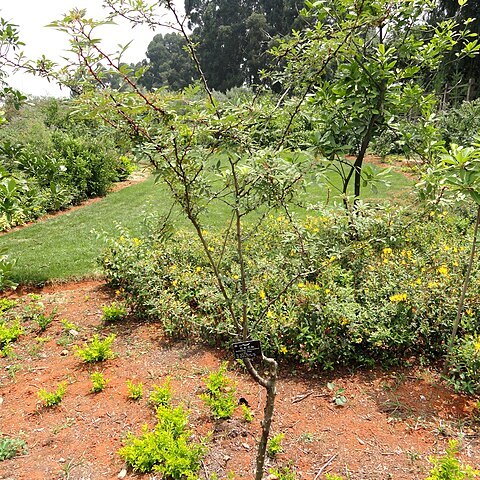A spiny shrub or a woody climber. The young branches are densely hairy. The leaves have stalks. They have an odd number of leaflets. The leaflets do not have stalks. The leaves are 1.5-5 cm long by 0.8-2 cm wide. They are oblong to sword shaped. They taper to the tip. They are hairy on both surfaces. There are 1 or 2 spines on the mid vein. The flowers are dark purple. The fruit are reddish. They are round and in dense clusters. The seeds are shiny black.


